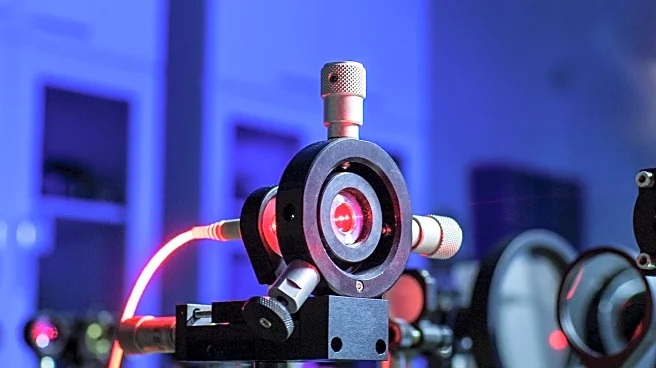What's Happening?
Researchers at Aalto University have developed a promising laser treatment aimed at slowing or halting the progression of dry age-related macular degeneration (AMD), a condition affecting the retina and
leading to central vision loss. This condition impacts approximately 20 million adults aged 40 and older in the United States. The new approach involves reinforcing the natural defense systems of retinal cells by applying controlled heat, which activates the eye's natural healing responses at a cellular level. The treatment uses near infrared light to safely warm the affected tissue, triggering mechanisms like heat shock proteins and autophagy to repair or remove damaged proteins. Positive results have been observed in animal studies, and human clinical trials are set to begin in Finland in 2026.
Why It's Important?
AMD is one of the most common causes of vision impairment among older adults, and currently, there is no effective treatment for its dry form. The development of this laser treatment could significantly impact the healthcare industry by providing a new method to manage AMD, potentially improving the quality of life for millions of individuals. If successful, this treatment could reduce healthcare costs associated with vision loss and increase accessibility to effective eye care solutions. The research also highlights the potential for innovative medical technologies to address age-related conditions, paving the way for further advancements in personalized medicine and eye care.
What's Next?
Human clinical trials for the laser treatment are scheduled to begin in Finland in the spring of 2026. The initial phase will focus on confirming the safety of the treatment, followed by determining the frequency required for lasting results. The research team has launched a spin-off company, Maculaser, to facilitate the clinical application of the therapy. If successful, the treatment could be available in hospital eye clinics within three years, with the ultimate goal of widespread availability at local ophthalmologists.











